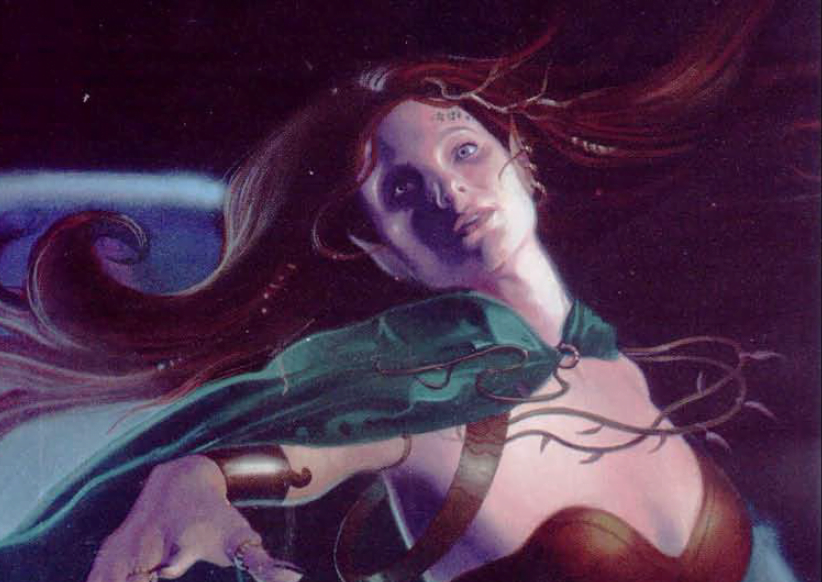It’s been a bit since we’ve had one of these write-ups where I’m not quite sure I should even be covering the subject, but occasionally it’s nice to read something short for a change rather than a full-length book. Issue #297 of Dragon, published July 2002, was largely a tie-in with the simultaneously released Epic Level Handbook. As a result, most of its content is best ignored just like that book, but there are still a pair of worthwhile-ish nuggets I want to touch on, the first being an odd article by James Jacobs titled “Sentinels of the Shore” and meant as a tie-in with his adventure from Dungeon “The Razing of Redshore,” which isn’t planar in nature and thus was skipped when we looked at that issue a couple weeks back. “Razing” is designed as a way of transitioning characters from level 20 to epic levels, both explaining that cap (sort of) and how characters come to surpass it. Really, Jacobs put a lot more thought into this stuff than Thomas Reid did for the actual Epic Level Handbook, but that’s neither here nor there. What is actually planar and pretty interesting is the lore surrounding this adventure’s backstory.
Jacobs writes that at the dawn of time, a mortal learned the secret of becoming a god and with this tried to gain worshippers just like them. He was punished for this, gods being selfish dicks and all, and soon he became the first dead god floating on the Astral Plane. Now known as the Lost Scion, he managed to regain a certain level of consciousness through some wonkiness involving an erinyes sorcerer with poor decision-making skills. One thing led to another, and the Lost Scion overpowered her and this new combination became an infernal abomination a la the Epic Level Handbook now calling himself Lascer. Lascer is trapped in a realm between the Astral and the Region of Dreams, which means that this previously non-canonical plane is now fully canonical and real, sort of. Maybe, I don’t know. It’s all a bit weird and messy, but so is everything even peripherally involving the Epic Level Handbook, so whatever.
And, uhh, really that’s pretty much it. Lascer seems like a rather interesting villain and everything about his storyline has fascinating implications for the multiverse. However, I think he only appeared in these two articles by Jacobs and then was forgotten. We do also receive a statblock for him, who at challenge rating 58 is more than capable of murdering, say, the entire githyanki race who’s hanging out with him in the Astral Plane, but that’s par for the course with this epic-level nonsense. The actual article is also filled with pages of spells, feats, etc., but all of it is epic or only relevant to “Razing” and so not terribly interesting. Scion’s story is also broken up between the beginning and ending of the article, which makes it difficult to piece together. In all, a cool concept, definitely something that could be used for a campaign, though only for inspiration as the actual crunch here is more epic nonsense.
Aside from the epic-level tie-ins, there’s also a random feature in this issue called “Children of the Cosmos” by Travis Stout, which focuses on new planetouched races. Two of these, the axani and cansin, are things we’d (the royal we) long wondered about, as they’re for planetouched lawful and chaotic characters. They’re both pretty much what you’d expect, and fill up the grid in predictable ways, though weirdly they’d never crop up again in the history of D&D (unless I’m sorely mistaken) and in fact new types of lawful/chaotic planetouched would be added soon afterward in the Monster Manual II.
Then the article lists six types of para-genasi, a truly random number that feels weird because it is weird. This includes a brief paragraph of description and then a stablock for dust, ice, magma, ooze, smoke, and steam genasi. Why no salt, or mist? Because they ran out of space, that’s why. In any case, the explanation for how all of these exist in a now-far-reduced version of the Inner Planes is that individuals are descended from the blood of two major elemental types, “For example, if the daughter of a mortal and an efreeti has a child with a djinn, that child’s descendants might include smoke para-genasi.” Sometimes (and by sometimes, I mean all the time, constantly) D&D has really weird ideas about genetics and racial makeup and heritable traits, and now is not the time to dig into all of this… but seriously, this information is barely necessary and not, I believe, something ever mentioned again. If you want these races to exist for some reason, you’ve now got stats for them, so yay.
“Children of the Cosmos” isn’t bad, but it features that killer combination of being largely unnecessary and also soon ignored by the rest of the game’s writers. Despite seeming like it adds something to the planes, it can be skipped entirely with no loss, and really even the axani and cansin statblocks are something a competent dungeon master could whip up on their own in just a few minutes. In general, the further planetouched went from their original conception in Planescape the worse they became, and this feels like the next step in that weird bit of devolution. Sadly, it will be far from the last.




